1. Overview
Thien Mu Pagoda, also known as Linh Mu Pagoda, nestled on the picturesque banks of the Perfume River in Hue, Vietnam, stands as a testament to the harmonious blend of history, faith, and natural beauty. With its elegant architectural features, tranquil surroundings, and rich cultural heritage, Thien Mu Pagoda always holds an important place in the hearts of the Vietnamese people and attracts many tourists every day.
2. Thien Mu Pagoda
2.1. General Information
- Location: 140-142 Nguyen Phuc Nguyen Street, Huong Long Ward, Hue City, Vietnam
- Open time: From 8 AM to 6 PM/ every day
- Entrance fee: Free
2.2. How To Get To Thien Mu pagoda
Thien Mu Pagoda is just 5km from Hue center, so you can easily go to this place by many means of transportation, such as motorbike, bicycle, taxi, go on foot, or especially by cyclo – an interesting means of transport with bold Vietnamese traditions.
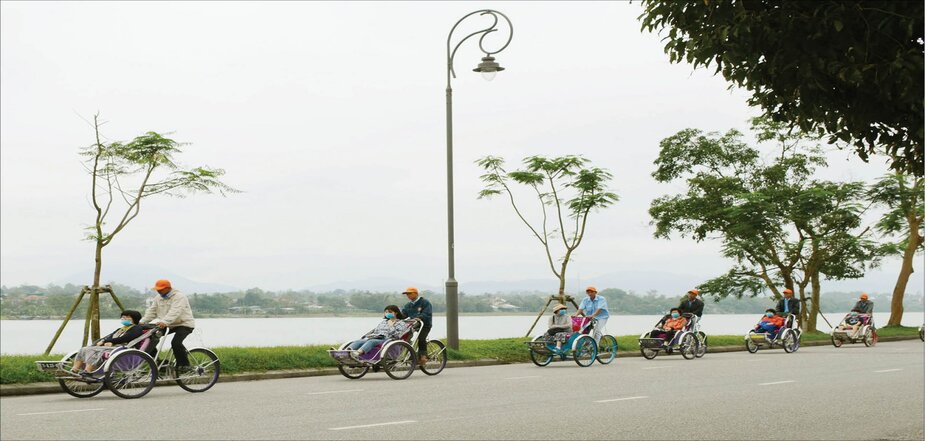
2.3. History Of Thien Mu Pagoda
- Early 17th century: Lord Nguyen Hoang ordered the construction of Thien Mu Pagoda on Ha Khe Hill, near the Perfume River in Hue.
- 1665: During the reign of Lord Nguyen Phuc Tan, the pagoda underwent expansion and renovation.
- 1710: The pagoda was significantly expanded and enhanced under the patronage of Lord Nguyen Phuc Chu.
He erected a massive bell cast from bronze and installed it in the pagoda’s tower, known as Dai Hong Chung - 1904: During the reign of Emperor Thanh Thai, a large-scale renovation of Thien Mu Pagoda took place.
- 1963: Thien Mu Pagoda gained international attention during the Vietnam War. In June of that year, Buddhist monk Thich Quang Duc famously self-immolated in protest against the South Vietnamese government’s religious policies.
- Today: Thien Mu Pagoda stands as a symbol of resilience and spiritual devotion.
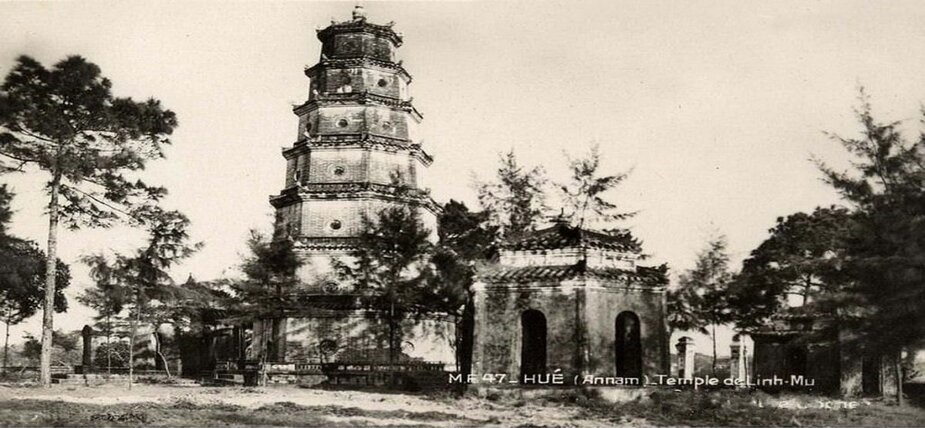
2.4. Architecture Of Thien Mu Pagoda
2.4.1. Phuoc Duyen Tower
The Phuoc Duyen Tower is the most prominent and iconic feature of Thien Mu Pagoda. Each level of the tower is slightly smaller than the one below it, creating an elegant tapering effect. Rising gracefully from the pagoda complex, this seven-story tower stands as a symbol of spiritual enlightenment and is a significant landmark in Hue.
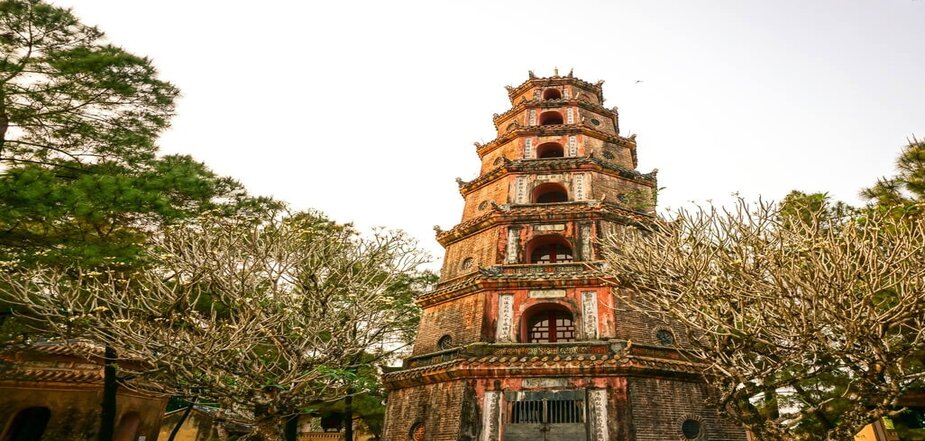
2.4.2. Tam Quan Gate
Tam Quan Gate, also known as Three-Door Gate, typically consists of three entrances or doorways arranged side by side. The central doorway is usually larger and taller than the two flanking doorways, creating a symmetrical and harmonious composition. The doors are often adorned with intricate carvings, decorative motifs, and religious symbols.
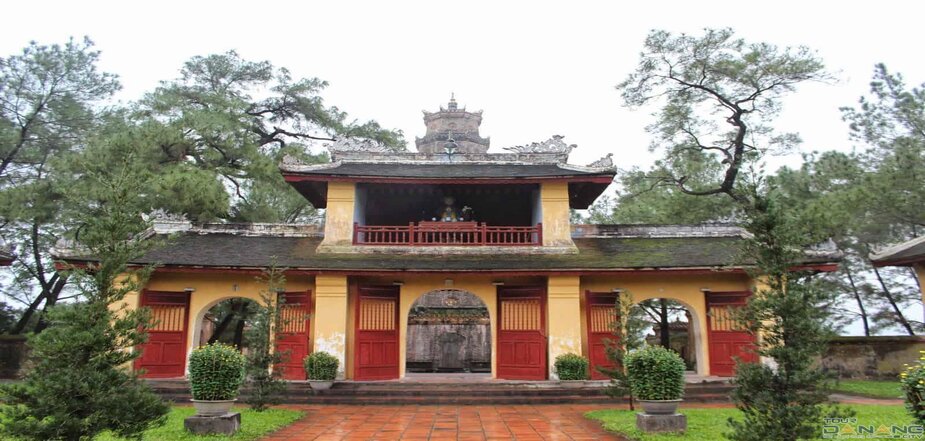
2.4.3. Dai Hong Chung Bell
The Dai Hong Chung Bell features intricate carvings and decorative motifs on its surface. These designs typically include floral patterns, dragons, and Buddhist symbols. The bell also bears inscriptions of ancient Vietnamese script, conveying historical and spiritual significance.
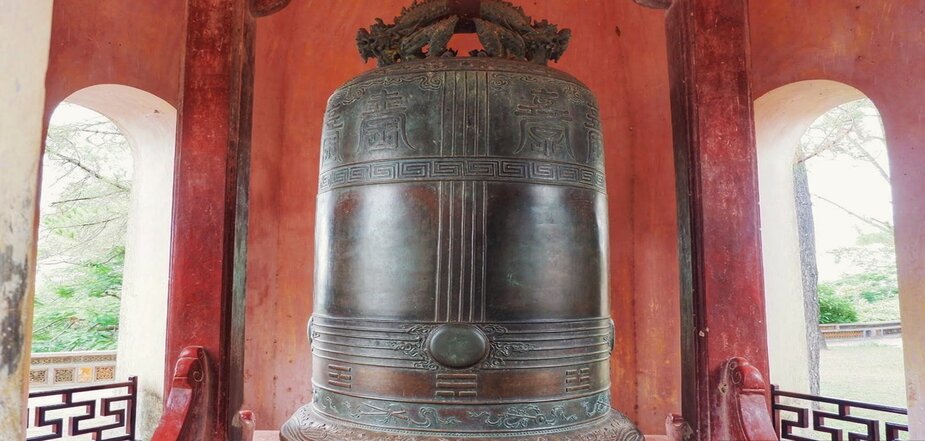
2.4.4. Giant Turtle
The stone stele of Lord Nguyen Phuc Chu engraved with an article about Buddhism placed on the back of a turtle, has existed for more than 400 years. This is considered a beautiful symbol that many tourists visit want to discover the deep history.
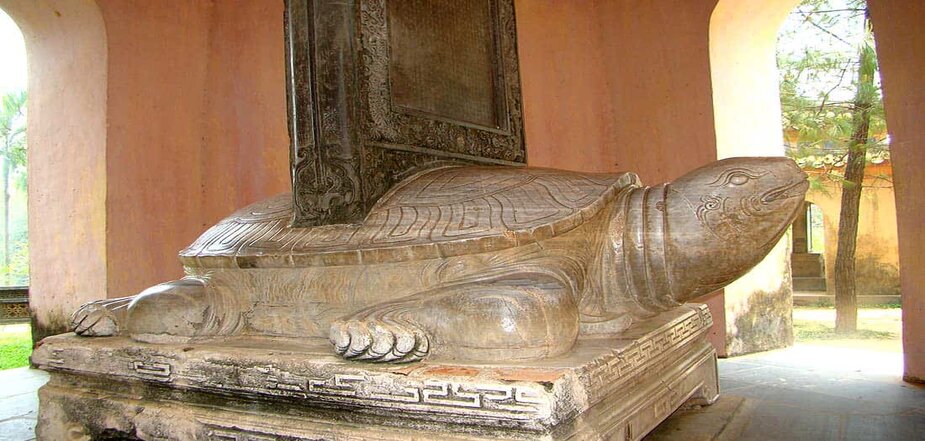
2.4.5. Dai Hung Shrine
The Dai Hung Shrine is a place of worship and devotion within Thien Mu Pagoda. It is dedicated to honoring and paying respects to deities and figures from Buddhist mythology. In addition, the temple serves as a sacred space for prayer, meditation, and religious rituals.
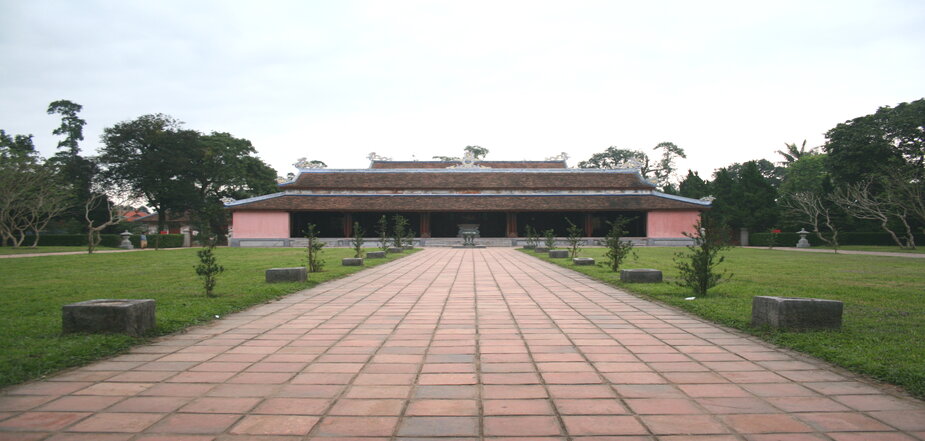
2.4.6. Dia Tang and Quan Am Temple
Dia Tang and Quan Am Temple are located behind Dai Hung Shrine, a large yard of ornamental trees and fruits inside the temple. The places of worship Quan Cong since 1907 and Avalokitesvara Bodhisattva statue.
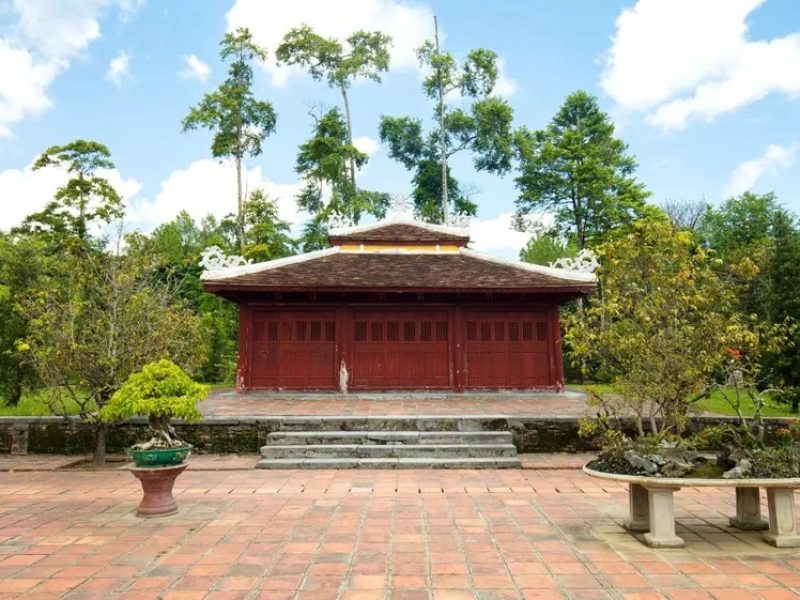
2.4.7. Immortal Austin Car
Thich Quang Duc, a Vietnamese Buddhist monk, famously self-immolated in protest against the religious policies of the South Vietnamese government in 1963, and this car was the vehicle used by Thich Quang Duc to travel to the location where he self-immolated.
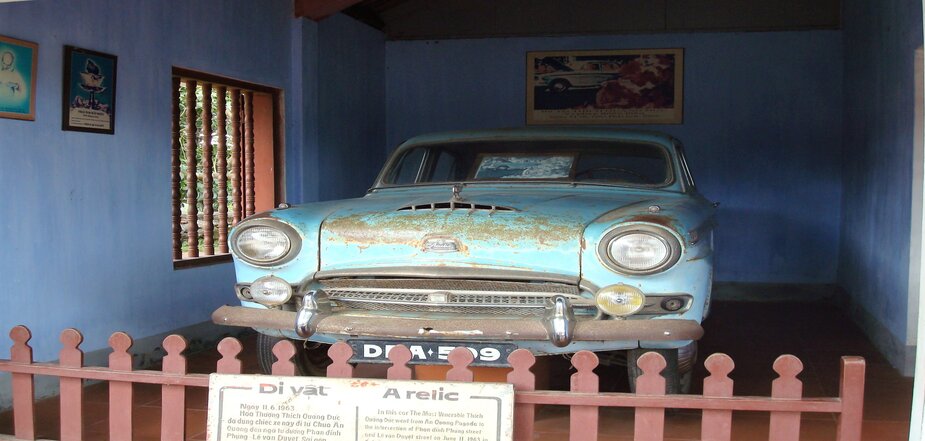
2.4.8. Thich Don Hau Tomb
At the end of the temple grounds is the tomb of the most famous monk, Thich Don Hau, who devoted his life to meaningful Buddhist activities. There is also a 7-storey tower, but the scale is smaller than Phuoc Duyen Tower, surrounded by an immense green pine forest.
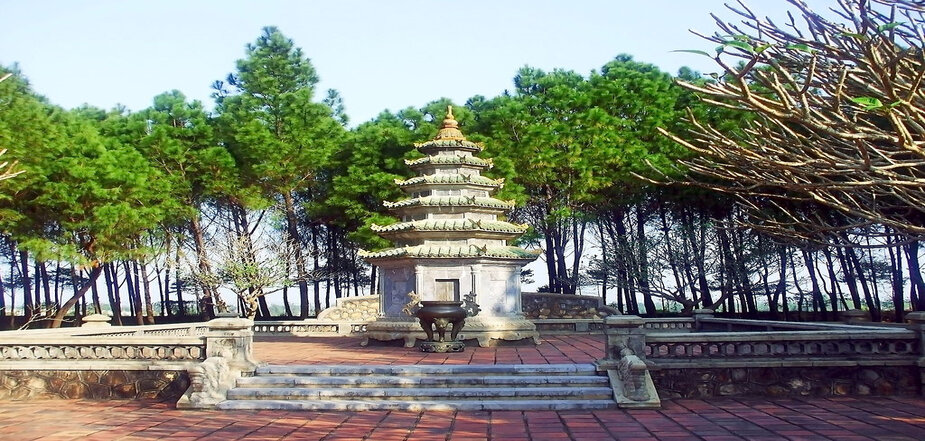
2.5. Tips when tourist visit The Thien Mu Pagoda
- Dress appropriately: As Thien Mu Pagoda is a religious site, it’s respectful to dress modestly.
- Be mindful of the behavior: Keep your voice low.
- Remove your shoes: Upon entering the pagoda’s buildings, it’s customary to remove your shoes.
- Explore the surroundings: Thien Mu Pagoda is located by the Perfume River, offering beautiful natural surroundings. Take a stroll along the riverbanks, enjoy the sunset view, and enjoy a tofu pudding here.
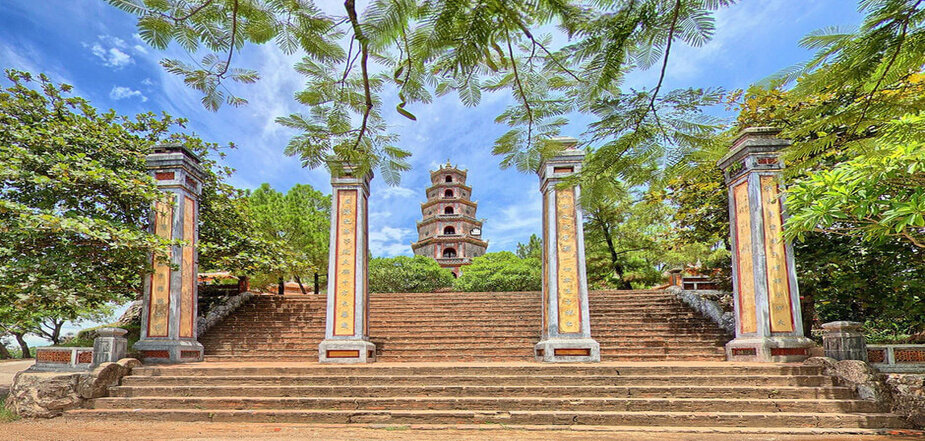
2.6. Best Time To Visit
The best time to visit Thien Mu Pagoda is during the months of January to April and September to November.
During these months, the weather in Hue is generally more pleasant, with the surrounding landscapes often in bloom, creating a picturesque setting for your visit.
2.7. Near Places To Visit
2.7.1. Minh Mang Tomb
Minh Mang Tomb is the final resting place of Emperor Minh Mang, the second emperor of the Nguyen Dynasty, who reigned from 1820 to 1841.
- Location: Huong Tho Commune, Hue City, Vietnam
- Open time: From 7:30 AM to 5 PM/ every day
- Ticket price: 150,000 VND/ adult and 30,000 VND/ child
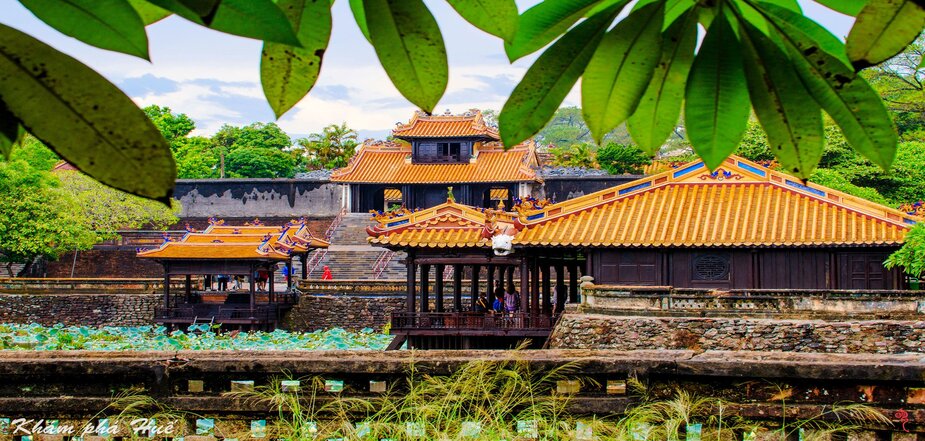
2.7.2. An Hien Garden House
The house follows traditional Vietnamese architectural style, characterized by a wooden structure with a tiled roof and intricate carvings.
- Location: 58 Nguyen Phuc Nguyen, Huong Long, Hue City, Vietnam
- Open time: From 8 AM to 5 PM/ every day
- Ticket price: 35,000 VND/ pax
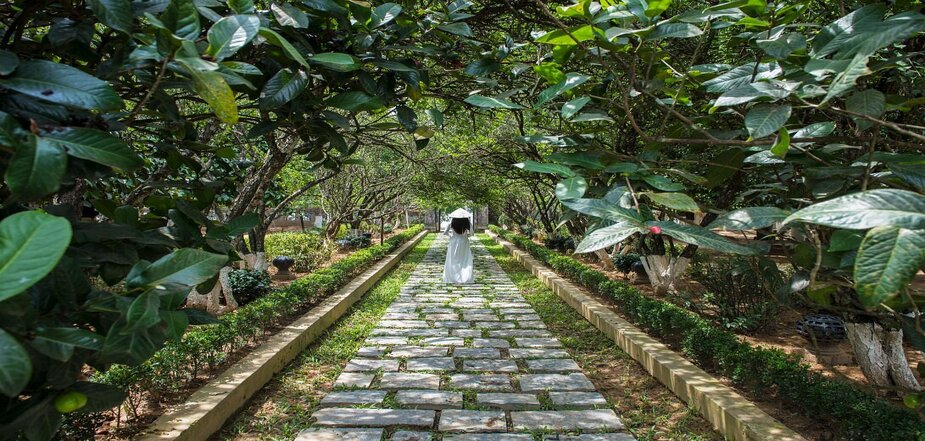
2.7.3. Hue Imperial City
Hue Imperial City is a testament to Vietnam’s rich cultural heritage and a reminder of the country’s royal past. It is a must-visit destination for history enthusiasts.
- Location: Huong Long Ward, Hue City, Vietnam
- Open time: From 7:30 AM to 5 PM/ every day
- Ticket price: 200,000 VND/ adult and 40,000 VND/ child
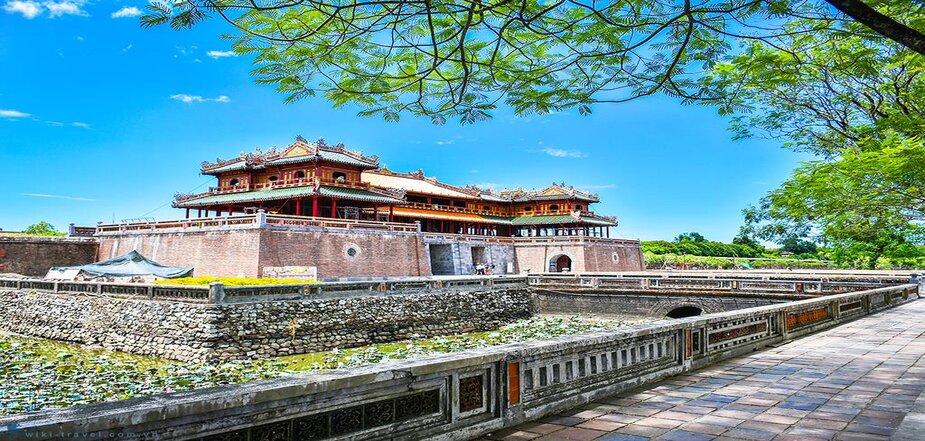
3. Conclusion
In conclusion, Thien Mu Pagoda in Hue has a rich history spanning centuries; the pagoda holds deep cultural significance and symbolizes spiritual devotion. Therefore, Metta Voyage believes a visit to this sacred site is an opportunity to immerse oneself in Vietnamese history, experience the power of faith, and appreciate the natural beauty that surrounds it.
Contact us
Website: mettavoyage.com
Email: info@mettavoyage.com
Hotline 24/7: + 84 989 383 572



0 Comment